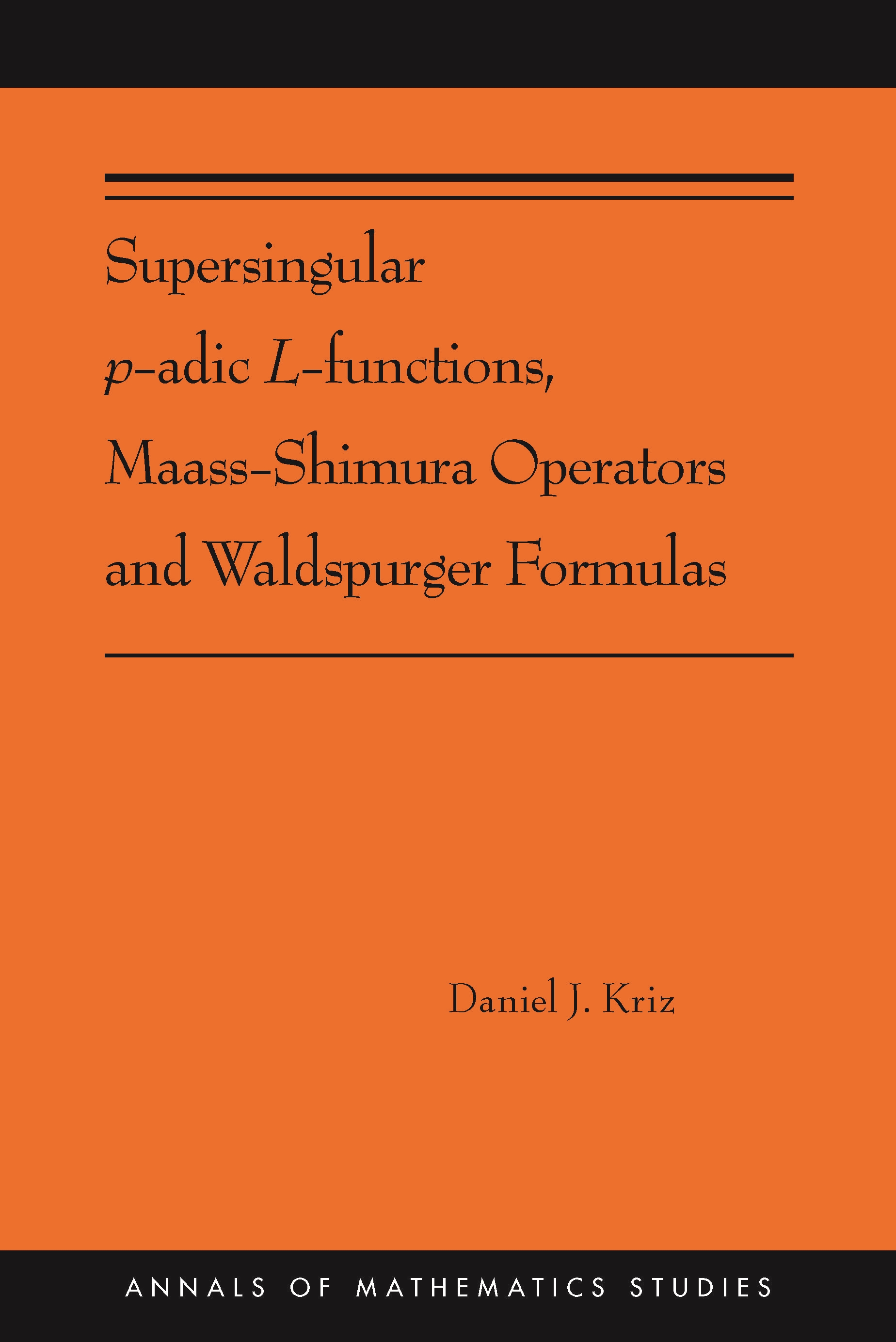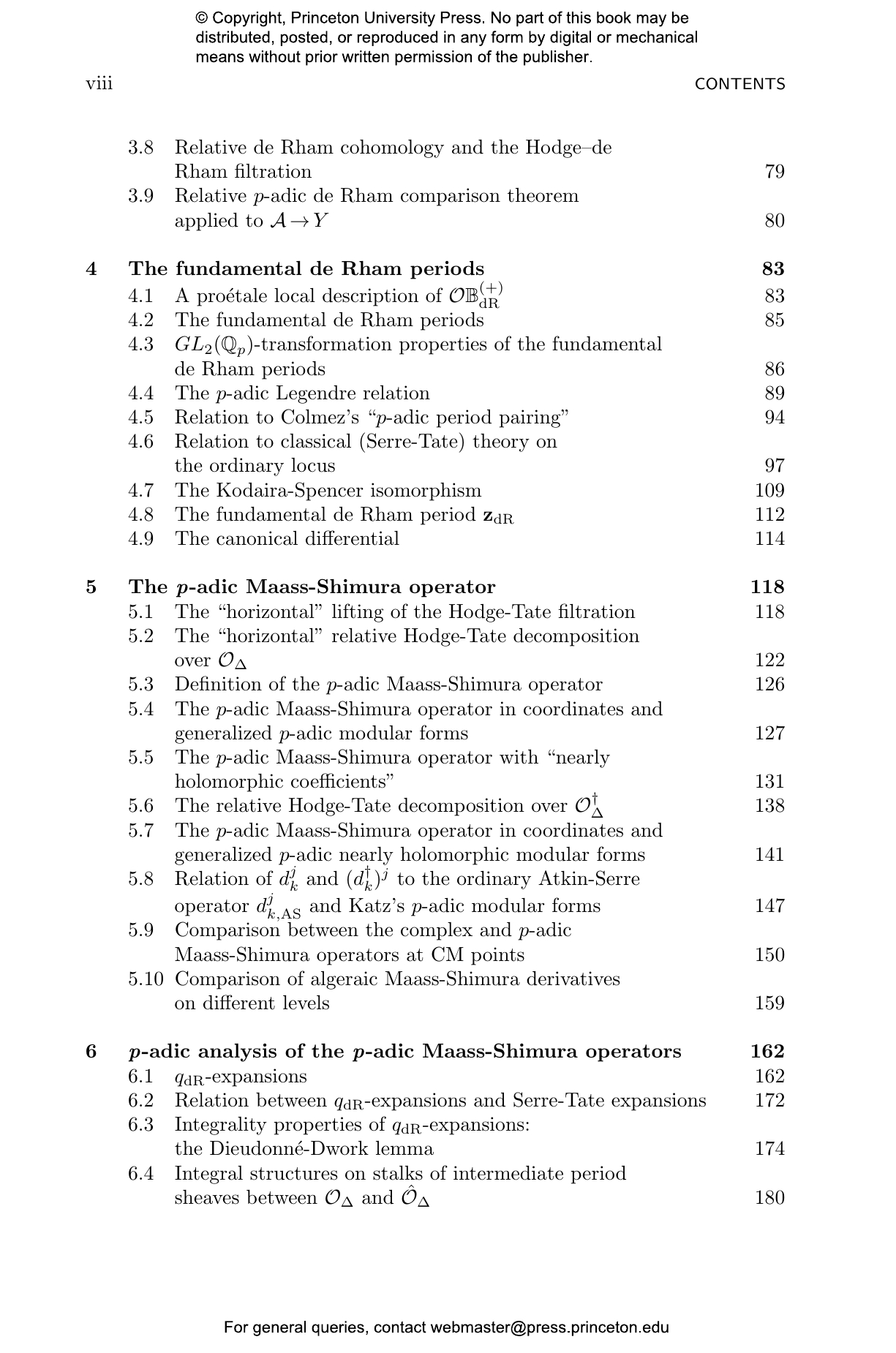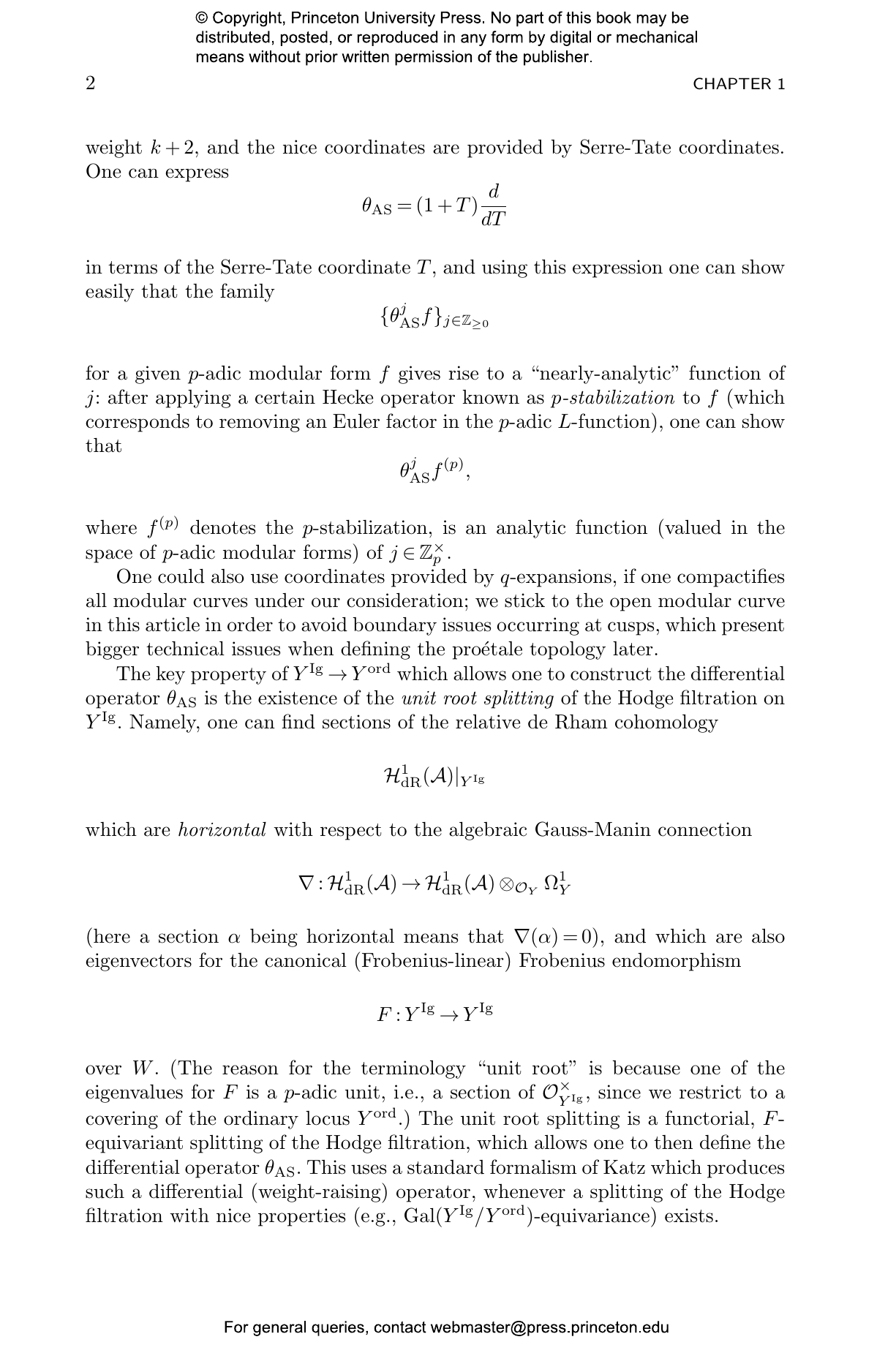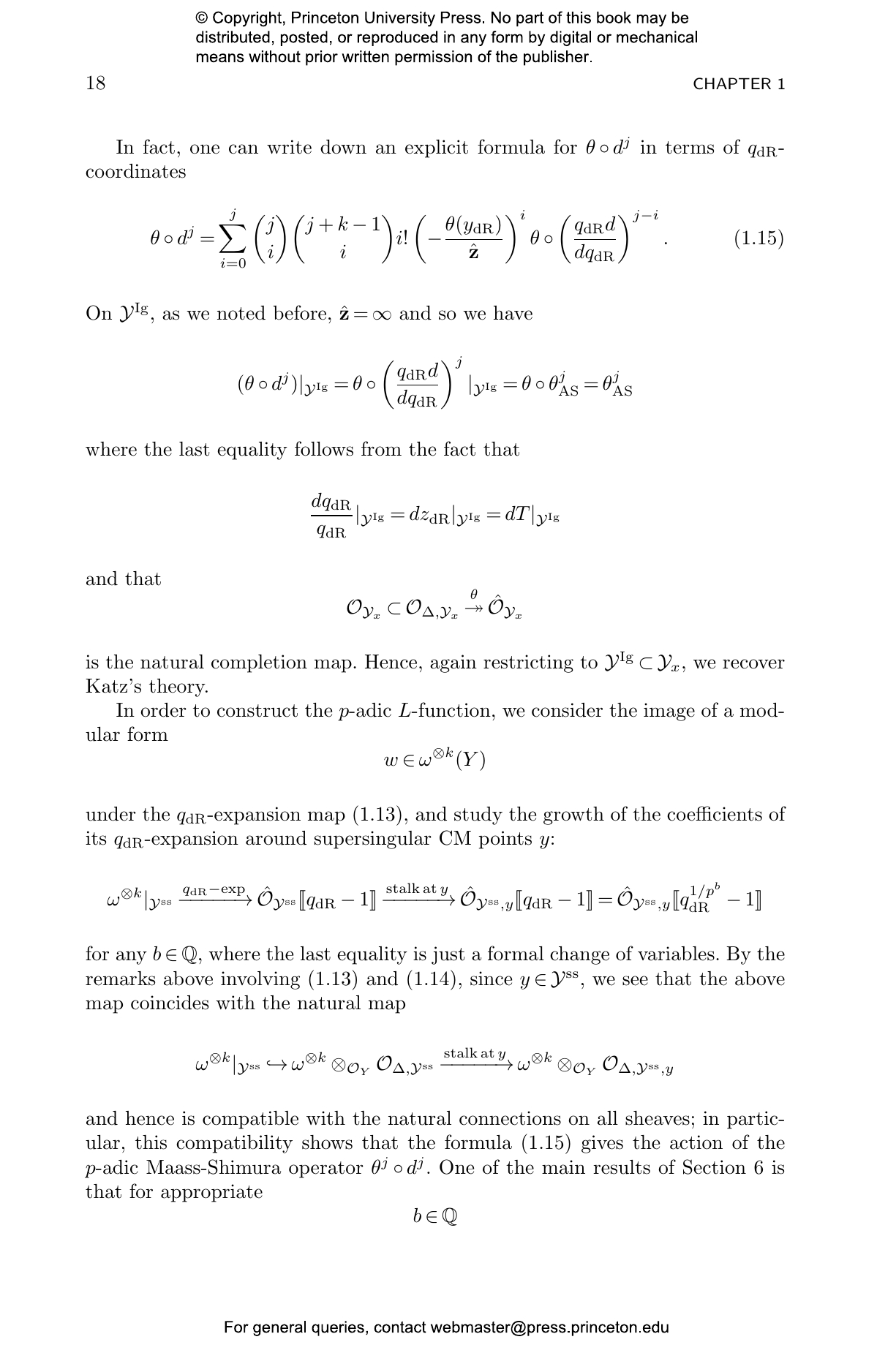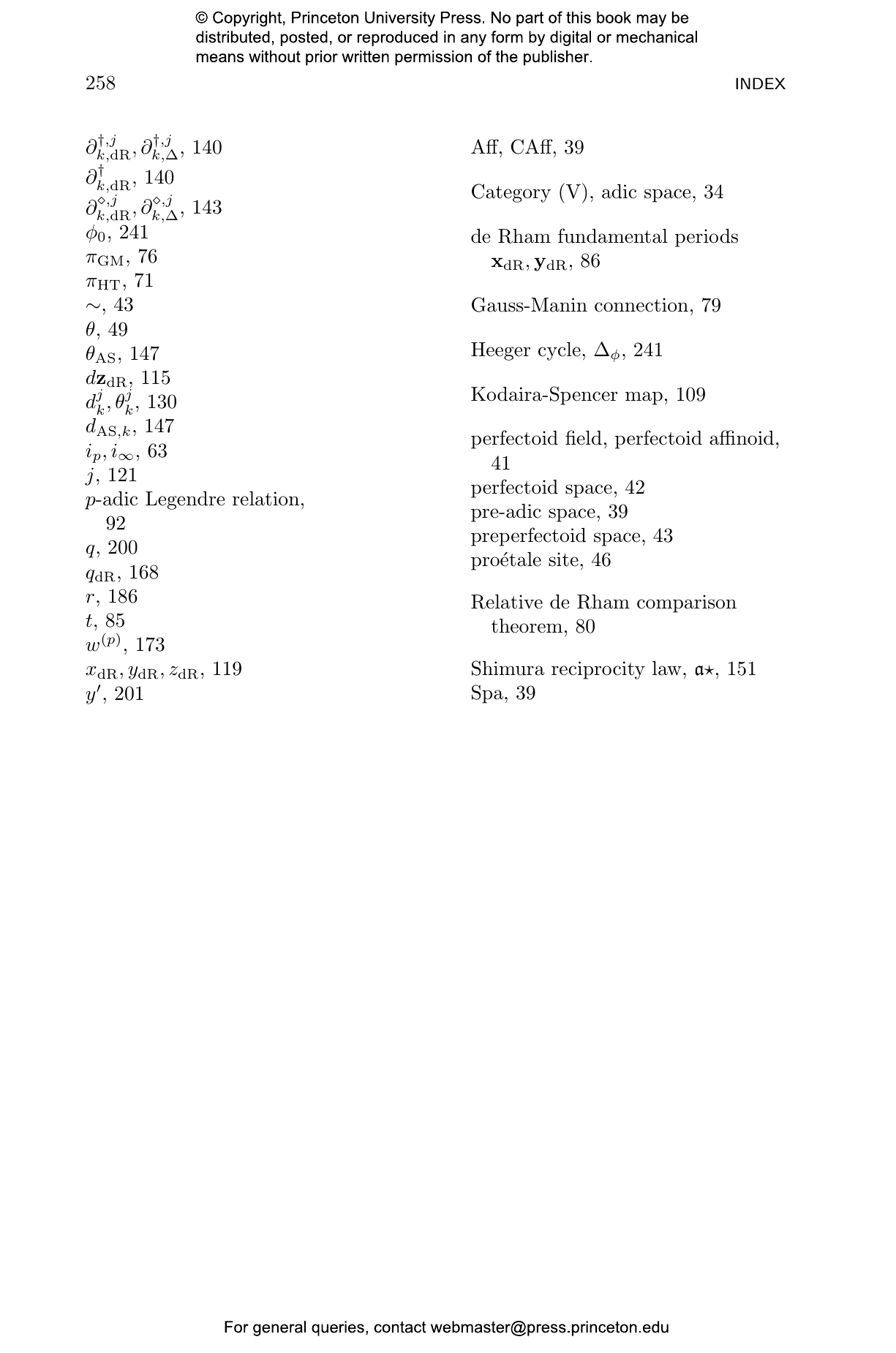Supersingular p-adic L-functions, Maass-Shimura Operators and Waldspurger Formulas


Hardcover
Paperback
- Price:
- $79.00/£65.00
- ISBN:
- Published (US):
- Nov 9, 2021
- Published (UK):
- Nov 30, 2021
- Copyright:
- 2021
- Pages:
- 276
- Size:
- 6.13 x 9.25 in.
- Main_subject:
- Mathematics
ebook
This book develops a new theory of p-adic modular forms on modular curves, extending Katz’s classical theory to the supersingular locus. The main novelty is to move to infinite level and extend coefficients to period sheaves coming from relative p-adic Hodge theory. This makes it possible to trivialize the Hodge bundle on the infinite-level modular curve by a “canonical differential” that restricts to the Katz canonical differential on the ordinary Igusa tower. Daniel Kriz defines generalized p-adic modular forms as sections of relative period sheaves transforming under the Galois group of the modular curve by weight characters. He introduces the fundamental de Rham period, measuring the position of the Hodge filtration in relative de Rham cohomology. This period can be viewed as a counterpart to Scholze’s Hodge-Tate period, and the two periods satisfy a Legendre-type relation. Using these periods, Kriz constructs splittings of the Hodge filtration on the infinite-level modular curve, defining p-adic Maass-Shimura operators that act on generalized p-adic modular forms as weight-raising operators. Through analysis of the p-adic properties of these Maass-Shimura operators, he constructs new p-adic L-functions interpolating central critical Rankin-Selberg L-values, giving analogues of the p-adic L-functions of Katz, Bertolini-Darmon-Prasanna, and Liu-Zhang-Zhang for imaginary quadratic fields in which p is inert or ramified. These p-adic L-functions yield new p-adic Waldspurger formulas at special values.
